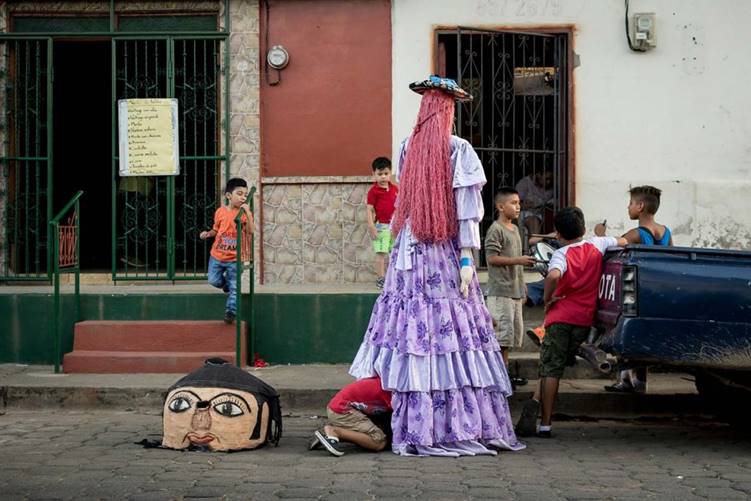
Nicaragua: Public Employees Hindered from Traveling to USA

PUBLICIDAD 1M
PUBLICIDAD 4D
PUBLICIDAD 5D
A family of “gigantona makers” have held on to the tradition of these giant puppets for decades, although in some periods of history it’s been menaced

The Flirt” is waiting to return to the streets of the Emita de Dolores neighborhood in Leon, following decades spent in storage. Teacher Wilfredo Arostegui paints her lips and fixes up her face while he tells her story.
The last time “The Flirt” was seen, she was accompanied by “Big-headed Dwarf” and guided by kerosene lanterns. That was in 1945. But beginning on December 8, 2017, she’ll return to her neighborhood to dance to the rhythm of the “Sones [a musical rhythm with indigenous, Spanish and African influences] of the road”.
Together with another four of these giant dancing puppets, she forms part of the oldest group of gigantonas in the country, with some 100 years under their belt. Arotegui’s only desire is to see The Flirt return to the streets of Leon in all her glory, and, above all, back in his neighborhood.
The Perez Arostegui family lives in Sutiaba, a historic sector of the city of Leon that was once an indigenous village. The teacher works feverishly these days, since The Flirt has to be ready for the annual gigantona competition, held in Leon.
“More than winning the competition, what we want is to return their traditional gigantona to the Ermita neighborhood,” Wilfredo emphasizes.
Everything about The Flirt is traditional. She’s made of tin, as in the past, instead of wood. Inside, she has a space for a candle, so in the nights of 1945, her eyes and her lips glowed, while the lanterns, also lit from within by oil lamps, illuminated her path.
Wilfredo Arostegui works with rigorous historical accuracy. He notes that to make the body of this gigantona, he consulted magazines and articles from the era. He’s also a strong critic of how the tradition has been altered by those young gigantona makers who use electricity and other less representative materials.
Teacher Arostegui has thrown himself into the work of researching everything that has to do with this cultural tradition. He takes advantage of his knowledge to teach their history to the children who come to his house every day. He rents his puppets for US $3.30 for a four-hour stretch. “The earnings go towards maintaining the gigantonas,” Arotegui notes.
His research has uncovered written accounts of gigantonas going up and down the streets of Leon since the middle of the 19th century, but it’s possible that they were around well before.
When the sun goes down and it’s 5 p.m., the children of Subtiaba come to the teacher’s house and in his living room they begin to select the one gigantona that they’ll make dance this night. They decide who will take on each of the different roles involved, switching off in the middle so that each one has a chance to make the puppet dance. The drum roll begins, night falls and the people come out to sit on the sidewalks in front of their houses and wait for them.
Translated by Habana Times
PUBLICIDAD 3M
PUBLICIDAD 3D